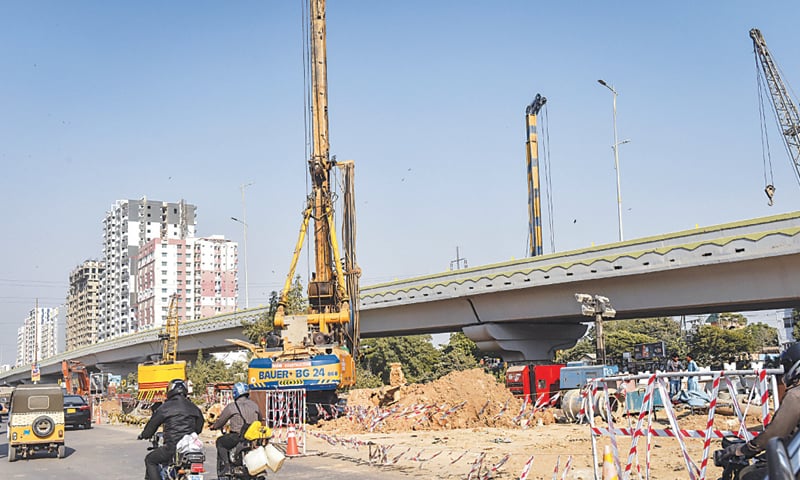KARACHI: Local cement sales are expected to decrease in the coming months as producers are shutting down production lines, bringing the total sector’s capacity utilisation down to 50 per cent in the case of some companies, according to industry sources contacted by Dawn.
They attributed the decline to various factors, including collapse of demand due to lack of private- or government-funded infrastructure projects.
All Pakistan Cement Manufacturers Association (APCMA) spokesperson, on the other hand, gave a different figure for production cuts in the sector, saying the sector is operating at 75pc capacity.
However, the APCMA has suspended issuing cement dispatch data since April. The APCMA routinely releases cement sales data for many years, however, when reached for comment, the association’s spokesperson refused to give a specific reason for the halt in reporting.
The requirement of CNIC on each sale of over Rs50,000 coupled with country-wide monsoon season, slow down in private sector construction activities and lack of public sector development programmes are some of the reasons given by the manufacturers for decline in local sales.
However, as per the Large Scale Manufacturing Index (LSMI) data, cement production dipped by around three per cent to 39.922 million tonnes in FY19 whereas exports rose to 6.4m tonnes.
All Pakistan Cement Distributors Association Chairman Chaudhry Munir told Dawn that cement off-take from the northern region shrank to 70,000-80,000 tonnes per day from over 100,000 tonnes just two months back. “I hope sales will improve next month,” he added.
An official working for the Lucky Cement, who asked not to be named, said the overall sales in the southern region had fallen to 15,000-16,000 tonnes per day from 23,000 tonnes in June.
He said the axle-load restriction has increased transportation costs upwards as previously a 10-wheeler truck would carry 700 bags but now it takes two trucks to transport the same. Besides, the CNIC condition is also causing problems as the share of total cement sales to property developers hovers somewhere between 20-25pc while the bulk sales are managed through unregistered market dealers and wholesalers.
“Our overall sales are down by 40-45pc,” he said, adding that peak cement season starts from February and ends in October while sales remain subdued from November to January owing to winter season.
Meanwhile, sources said southern plants with one production line are operating at 50pc capacity while some plants having three to four lines had closed one or two lines.
For example, Attock Cement had resumed its two production lines on Tuesday this week out of three in southern region after keeping them closed for the last 10 days.
An APCMA official, who also asked not to be named, said capacity utilisation at cement makers in FY19 was 85pc but it has fallen to 75pc in July whereas figures for the month of August will be available at the month-end.
On reports of various plant closures, he said that, “to my knowledge, to date no plant has been totally shut down. Despatches are still going on.” Prices have registered only marginal change in the northern region, he said, but the southern region has seen increases of slightly less than 20pc due to imposition of taxes and duties, axle-load restrictions and CNIC requirement.
However, he said sales have been depressed from July onwards while export to India had already stopped in February owing to the imposition of 200pc import duty by New Delhi.
The Association of Builders and Developers Chairman Mohammad Hassan Bakhshi said no new projects have been announced in the last three to four months after input costs increased by around 30-40pc due to rise in steel bar prices and cement prices after the 2019-20 Budget announcement.
He said the arrival of instalments from customers for the already-booked projects has halved as many people are unable to pay their dues owing to the rising cost of living on account of soaring food prices and utility costs.
“The only option they have is to sell their apartments,” he added. “But the market lacks buyers for flats despite the fact that prices have not shown any steep hike,” he added.
Published in Dawn, August 24th, 2019














































